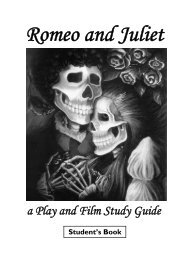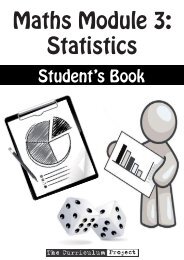Student's Book â Dec 2009 (5.9mb) - The Curriculum Project
Student's Book â Dec 2009 (5.9mb) - The Curriculum Project
Student's Book â Dec 2009 (5.9mb) - The Curriculum Project
You also want an ePaper? Increase the reach of your titles
YUMPU automatically turns print PDFs into web optimized ePapers that Google loves.
missionary (n) – a person who goes to different places to get people to follow his/her religionnoble (n) – a person whose family is related to the ruler’s (king’s) familypriest (adv) – religious leadershaman (n) – a traditional cult priest who communicates with spiritsscholar (n) – a person who studies all their life1.2.3.4.5.As surplus developed, new jobs emerged such as weavers, potters metal workers, and othercrafts people. This caused different classes to appear as more successful crafts people or farmersbegan to have more and were able to get other people to work for them – like in Taa’s family.Local priests and chiefs were supported by their communities, as there was a surplus of food.Southeast Asia is located on the important sea trade routes between China, India and other partsof Asia. Maritime trade brought a lot of influence from India as well as China. Indian merchantssettled in Southeast Asia and intermarried with the families of the local chiefs. <strong>The</strong>y broughtthe system of divine kings based on the Indian model. In this model, the rulers and kings wereconsidered to be like gods or descendants of gods. This meant that their right to rule came fromHeaven and people could not oppose it.<strong>The</strong>re were three main classes. At the top was the ruling class of kings and nobles, followed bythe merchant and priestly class. At the bottom was the working class, made up of farmers, craftspeople, and other workers. Trade created the merchant class. This class consisted of local peoplewho had set up businesses. <strong>The</strong>re were also many foreign traders from around the region. Somemerchants came from as far away as India and China.<strong>The</strong>re were priests in all the kingdoms ofSoutheast Asia. At first, there were theindigenous cults’ priests, shamans (shahmahns),and healers. <strong>The</strong>y had a lot ofrespect in the villages. When new religionswere introduced, new priests appeared. <strong>The</strong>ywere Hindu Brahmins (brah-mins) fromIndia, Buddhist missionaries from India andChina, Muslim ulamas (ooh-lah-mahs), andChristian missionary priests from Europe.<strong>The</strong> class system in ancient Southeast Asiawas very flexible. Fishermen could set up abusiness, and become part of the merchant class. Also, anyone who wanted to become a religiousscholar could do so. However, this option was mostly only open to men.exercisecomprehension,identifyingmain point,summarising,inferringA. <strong>The</strong> topic of this text is:I. <strong>The</strong> rulers of ancient Southeast AsiaII. Class system in ancient Southeast AsiaIII. Variety of religion in Southeast AsiaIV. <strong>The</strong> importance of tradeB. Which sentence best summarises the text:I. At first, it was easy for people to move from class to class.II. <strong>The</strong> rulers of ancient Southeast Asia participated in trade.III. Trade helped develop the three classes in ancient Southeast Asia.IV. Only men could become priests in ancient Southeast Asia.15


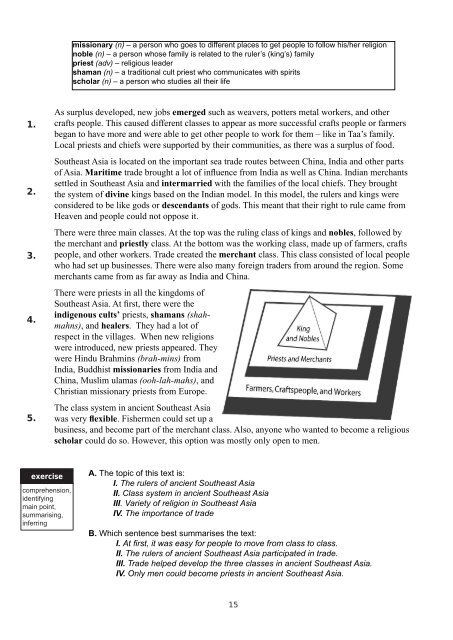
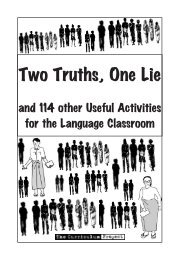
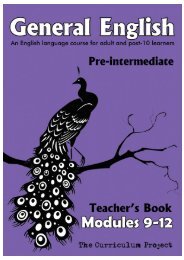



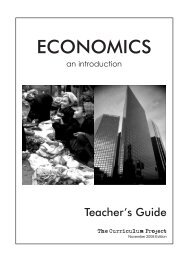




![[Eng] Nov 2012 DRAFT - The Curriculum Project](https://img.yumpu.com/45590859/1/184x260/eng-nov-2012-draft-the-curriculum-project.jpg?quality=85)

